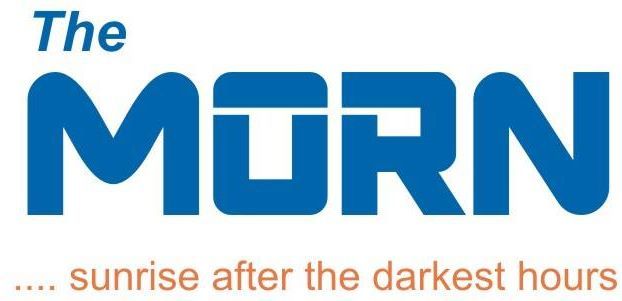Chennai: The Indian Space Research Organisation (ISRO) has taken yet another leap forward in ihe prestigious Gaganyaan human flight mission, by succcessfully completing the final qualification tests of the Crew Module Propulstion system, by achieving all the parameters as expected under nominal and off-nominal conditions for a total duration of 3,429 seconds. ISRO today confirmed that the final test in a series of 14 tests, conducted at ISRO Propulsion Complex (IPRC), Mahendragiri in Tamil Nadu, has been completed to qualify the Crew Module Propulsion System for the Gaganyaan Programme. The test was conducted for a duration of 602.94 s and all the parameters were as expected.
“With this test, conducted yesterday, the Crew Module Propulsion System has undergone 14 tests under nominal and off-nominal conditions for a cumulative duration of 3,429 seconds”, it said. The system, consisting of 12 Nos. of 100 N thrusters and associated flow control components, will provide three-axis control to the Crew Module during re-entry i.e from an altitude of 170 km to 7 km till the deployment of the parachute-based deceleration system, it added. The Crew Module Propulsion System was designed and developed at the Liquid Propulsion Systems Centre of ISRO and the tests were carried out in the test facility at IPRC, Mahendragiri, marking a major milestone in taking forward the prestigious mission.
ISRO said the Gaganyaan project envisages demonstration of human spaceflight capability by launching crew of 3 members to an orbit of 400 km for a 3 days mission and bring them back safely to earth, by landing in Indian sea waters. The project will be accomplished through an optimal strategy by considering inhouse expertise, experience of Indian industry, intellectual capabilities of Indian academia & research institutions along with cutting edge technologies available with international agencies.
The pre-requisites for Gaganyaan mission include development of many critical technologies, including human rated launch vehicle for carrying crew safely to space, Life Support System to provide an earth like environment to crew in space, crew emergency escape provision and evolving crew management aspects for training, recovery and rehabilitation of crew. Various precursor missions are planned for demonstrating the Technology Preparedness Levels before carrying out the actual Human Space Flight mission. ISRO said these demonstrator missions include Integrated Air Drop Test (IADT),
Pad Abort Test (PAT) and Test Vehicle (TV) flights. Safety and reliability of all systems will be proven in unmanned missions preceding the manned mission. The Space Agency’s heaviest rocket GSLV-MkIII, rechristened as LVM3 rocket–the well proven and reliable heavy lift launcher of ISRO, has been identified as the launch vehicle for Gaganyaan mission. LVM-3 is a three-stage vehicle, with the third upper stage containing the cryogenic engine stage, while the first and second stage is propelled by solid and liquid prolennats respectively. It consists of solid stage, liquid stage and cryogenic stage.
All systems in the LVM3 launch vehicle are re-configured to meet the human rating requirements and christened Human Rated LVM3 (HLVM3), which will be capable of launching the Orbital Module to an intended Low Earth Orbit of 400 km. HLVM3 consists of Crew Escape System (CES) powered by a set of quick acting, high burn rate solid motors which ensures that Crew Module along with crew is taken to a safe distance in case of any emergency either at launch pad or during ascent phase. Orbital Module (OM) that will be Orbiting Earth comprises of Crew Module (CM) and Service Module (SM). OM is equipped with the state-of-the-art avionics systems with adequate redundancy considering human safety.
ISRO said CM is the habitable space with Earth like environment in space for the crew. It is of double walled construction consisting of pressurized metallic Inner Structure and unpressurised External Structure with Thermal Protection System (TPS). It houses the crew interfaces, human centric products, life support system, avionics and deceleration systems. It is also designed for re-entry to ensure safety of the crew during descent till touchdown.
SM will be used for providing necessary support to CM while in orbit. It is an unpressurized structure containing thermal system, propulsion system, power systems, avionics systems and deployment mechanisms. On the new technologies being developed for Gaganyaan, ISRO said Human safety is of paramount importance in Gaganyaan mission. In order to ensure the same, various new technologies comprising of Engineering systems and Human centric systems are being developed and realised. On Crew training for the Gaganyaan mission,
ISRO said Astronaut Training Facility established in Bengaluru caters to Classroom training, Physical Fitness training, Simulator training and Flight suit training. Training modules cover academic courses, Gaganyaan Flight Systems, Micro-gravity familiarization through Parabolic Flights, Aero-medical training, Recovery & Survival training, mastering of Flight Procedures and training on Crew Training Simulators. Aero medical training, Periodical flying practice and Yoga are also included as part of the training. UNI

 Subscribe THE MORN
Subscribe THE MORN